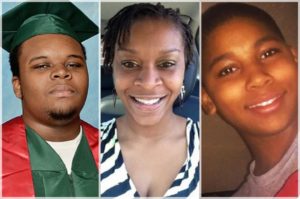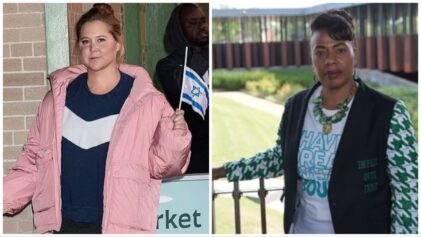What is to be done when the law is the crime being committed? Let it marinate for a minute.
If there is a positive outcome emanating from the grand jury decision not to indict the Cleveland police officers in the killing of Tamir Rice, it is this: The road to reform is paved with the vision of new laws to lift us from our oppression.
It is not a novel idea, but rather a concept with which Black people have been forced to contend for centuries, since we were targeted for kidnap, forced labor, rape, murder, pillaging and theft. And the notion of a legal framework to uplift or suppress a victimized people is something which the oppressed have addressed to their benefit, or ignored to their peril. After all, slavery, Jim Crow, the Nuremberg laws of Nazi Germany, apartheid— all were perfectly legal, draped and dressed in the legitimacy of a legal code.
In Letter From a Birmingham Jail, Martin Luther King spoke of the responsibility to disobey unjust laws:
An unjust law is a code that a numerical or power majority group compels a minority group to obey but does not make binding on itself. This is difference made legal. By the same token, a just law is a code that a majority compels a minority to follow and that it is willing to follow itself. This is sameness made legal. Let me give another explanation. A law is unjust if it is inflicted on a minority that, as a result of being denied the right to vote, had no part in enacting or devising the law.
Dr. King used the example of Alabama, whose undemocratically elected legislature enacted the segregation laws, and employed underhanded methods to prevent Black people from registering to vote. This happened even as Black people were the majority population in some counties, yet not a single African- American was registered to vote.
Under slavery, and later under Jim Crow segregation, up until today, unjust laws have governed the nation, color-coded and based on the badge of slavery. During the Slave Codes and the Black Codes, certain crimes and certain punishments applied only to Black people. A Black person faced severe penalties or even death for offenses that were nonexistent for whites. Meanwhile, whites faced no punishment for killing Black people, who were deemed as inferior, not human, and chattel. As Supreme Court Justice Roger B. Taney wrote in the Dred Scott v. Sandford decision, Black people had no rights:
They had for more than a century before been regarded as beings of an inferior order, and altogether unfit to associate with the white race either in social or political relations, and so far inferior that they had no rights which the white man was bound to respect, and that the negro might justly and lawfully be reduced to slavery for his benefit. He was bought and sold, and treated as an ordinary article of merchandise and traffic whenever a profit could be made by it. This opinion was at that time fixed and universal in the civilized portion of the white race. It was regarded as an axiom in morals as well as in politics which no one thought of disputing or supposed to be open to dispute, and men in every grade and position in society daily and habitually acted upon it in their private pursuits, as well as in matters of public concern, without doubting for a moment the correctness of this opinion.
These days, the laws, policies, procedures and regulations in place—from the redlining of Black neighborhoods and predatory lending, to the war on drugs and mass incarceration—remind us that Black people are at a legal disadvantage. Specifically, in the area of police misconduct, Blacks are racially profiled, and as such are the disproportionate victims of excessive and deadly use of force by police. The stereotype of Black people, and Black children, as a criminal element and a danger to white society is reinforced in the national psyche, and reflected in the laws that normalize white supremacy and anti-Black bias. And in some jurisdictions they are the only victims. Yet, the laws are designed to protect the police officers who commit these acts, justify their actions, and blame the victims for their own death.
Writing for The Atlantic, David A. Graham explores the recent mistrial in the Freddie Gray case, and the Tamir Rice grand jury decision to raise a larger issue of the law, and how it is designed to protect the police. This is not just a matter of juries who are deferential to police officers, and prosecutors who are reluctant to indict them for killing Black people, but also the broad legal protections that provide police with substantial latitude.
As Graham noted, the Supreme Court in Graham v. Connor ruled that events “must be judged from the perspective of a reasonable officer, rather than with the 20/20 vision of hindsight.” McGinty argued that he could not prove that what happened to Tamir was a crime.
“The state must be able to show that the officers acted outside the constitutional boundaries set forth by the Supreme Court of these United States,” McGinty said, offering that while the boy’s death was a tragedy, “it was not, by the law that binds us, a crime.”
Further, prosecutors may move quickly or drag their feet, as in the killing of Tamir Rice, Sandra Bland, Michael Brown, Laquan McDonald and others, but the real issue is, as Graham concludes, that the laws and the system itself make it hard to hold police accountable. So enforcing the existing laws will not provide the pathway to reform.
Rather, the entire legal framework undergirding all of this injustice and inequity must be dismantled and replaced entirely. And seeking a special prosecutor in an individual case involving a police officer, while helpful, will not do the trick. We must change the law rather than reform a few laws and merely tweak it at the edges.



